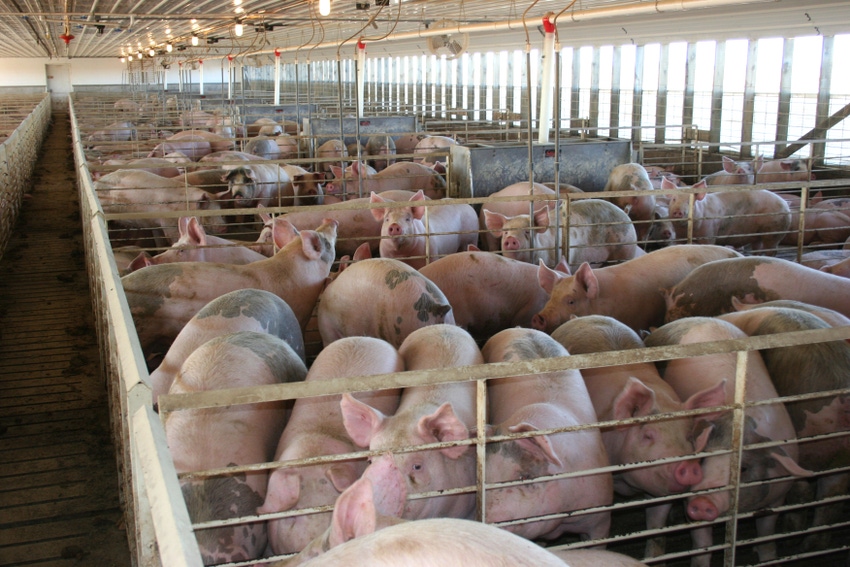Study confirms optimum calcium:phosphorus ratio for mid-weight pigs
Excess calcium may be detrimental to growth performance of 50-85 kg pigs if dietary phosphorus concentration is at or below requirement.
March 7, 2019

In pig diets, the amount of digestible calcium has a direct effect on phosphorus digestibility and the overall growth performance of the animals, according to an announcement from the University of Illinois. With more calcium, phosphorus digestibility and feed intake decrease, leading to lower-weight pigs.
For several years, University of Illinois professor Hans H. Stein in the department of animal sciences and the Division of Nutritional Sciences has been working to establish the optimum calcium-to-phosphorus ratio for pigs at various developmental stages. Recently, in an Animal Feed Science & Technology article, his research team determined that ratio for pigs weighing 50-85 kg.
“We’ve determined the ratio for heavy pigs and very young pigs, but never for this weight group. Our results confirmed what we’ve seen in other weight groups: If we overfeed calcium, the pigs won’t eat as much, and they will have lower growth performance and lower bone ash. Clearly, high calcium is detrimental to growth performance of these pigs,” Stein said.
Stein’s research team, led by doctoral student Vanessa Lagos, formulated 15 corn/soybean meal-based diets with varying calcium and phosphorus concentrations and fed them to 90 barrows (average weight 50 kg) over 30 days. Diets were formulated to contain 0.14%, 0.27% or 0.41% standardized total tract digestible (STTD) phosphorus and 0.13%, 0.25%, 0.38%, 0.50% or 0.63% STTD calcium. These values represented 50-150% of the STTD phosphorus requirement and 30-170% of the total calcium requirement, Stein said.
By the end of the 30-day trial, at which time the pigs’ average weight was 85 kg, the researchers were able to determine pig growth performance. Specifically, they quantified final bodyweight, average daily gain, gain:feed ratio and incorporation of the minerals into bone.
“Our results showed that excess calcium is detrimental to growth performance of 50-85 kg pigs if the concentration of phosphorus is at or below the requirement,” Stein said. “If you have excess phosphorus in the diet, then excess calcium is not so detrimental.”
Stein noted that most commercial diets are unlikely to provide excess phosphorus. It’s one of the most expensive nutrients and causes environmental problems when it is excreted in urine and manure.
“This study helped us confirm that we need to know the digestibility of calcium in pig diets and make sure we deliver exactly the right amount, rather than overfeeding,” he added. “Our results indicate that to assure adequate bone mineralization without affecting growth performance, the ratio of STTD calcium to STTD phosphorus should be about 1.23:1 in diets for 50-85 kg pigs.”
Stein’s co-authors include Vanessa Lagos, Carrie L. Walk and Michael R. Murphy. The research was supported by AB Vista.
Source: University of Illinois, which is solely responsible for the information provided and is wholly owned by the source. Informa Business Media and all its subsidiaries are not responsible for any of the content contained in this information asset.
You May Also Like



